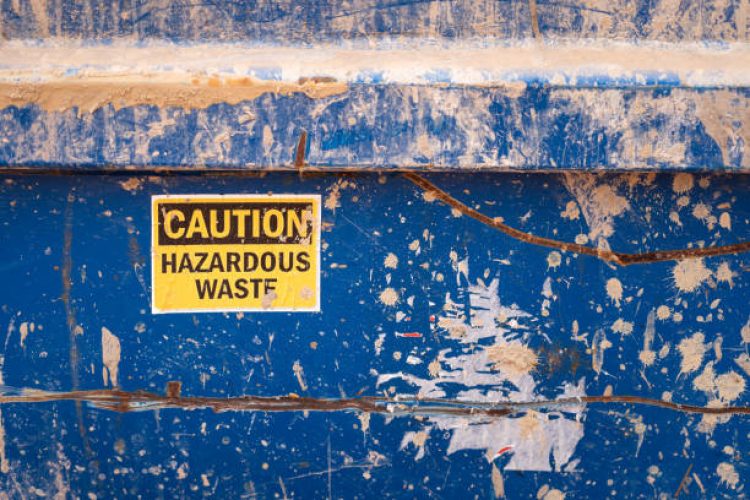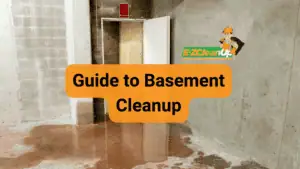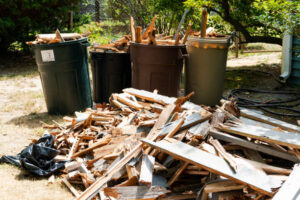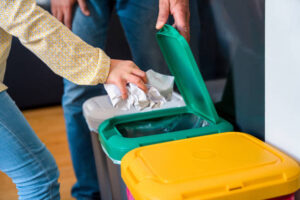Hazardous waste management is a critical environmental and public health concern that affects businesses, institutions, and communities worldwide. With over 350 million tons of hazardous waste generated in 2023, understanding proper disposal methods has never been more important. This comprehensive guide will walk you through everything you need to know about handling hazardous waste responsibly.
Understanding Hazardous Waste: What You Need to Know
Hazardous waste poses significant risks to human health and the environment due to its unique properties. Materials are deemed hazardous often due to their toxicity, flammability, corrosiveness, reactivity, or radioactivity. The hazardous waste management industry is experiencing substantial growth, with the market size estimated at USD 38.72 billion in 2024.
Types of Hazardous Waste
Understanding what constitutes hazardous waste is the first step toward responsible disposal:
- Chemical Waste: Industrial chemicals, solvents, acids, and bases
- Biomedical Waste: Healthcare facility waste, pharmaceutical products, and contaminated materials
- Radioactive Waste: Materials containing radioactive elements
- Electronic Waste: Batteries, mercury-containing equipment, and electronic devices
- Universal Wastes: Fluorescent bulbs, pesticides, and mercury-containing equipment
The Legal Framework: RCRA and EPA Regulations
The foundation of hazardous waste management in the United States is the Resource Conservation and Recovery Act (RCRA). The regulations governing hazardous waste identification, classification, generation, management and disposal are found in title 40 CFR parts 260 through 273.
EPA established a comprehensive regulatory program to ensure that hazardous waste is managed safely from “cradle to grave” meaning from the time it is created, while it is transported, treated, and stored, and until it is disposed.
Understanding Generator Categories
Hazardous waste generators are classified into three main categories based on the amount of waste they produce monthly:
Large Quantity Generators (LQGs)
Generate 1,000 kilograms (about 2,200 lbs.) or more per month of hazardous waste, more than one kilogram per month of acutely hazardous waste, or more than 100 kilograms per month of acutely hazardous waste
Small Quantity Generators (SQGs)
Generate between 100 kg and 1,000 kg of hazardous waste per month
Very Small Quantity Generators (VSQGs)
Generate less than 100 kg of hazardous waste per month
Each category has specific regulatory requirements, with more stringent standards applying to facilities that generate larger volumes of waste.
7 Essential Steps for Responsible Hazardous Waste Disposal
1. Identify Your Hazardous Waste
The first step in proper waste management is identification. All generators must determine if their waste is hazardous and must oversee the ultimate fate of the waste. Conduct thorough waste characterization by:
- Reviewing Material Safety Data Sheets (MSDS)
- Testing waste for hazardous characteristics
- Checking EPA’s listed hazardous wastes
- Consulting with environmental professionals when uncertain
2. Properly Classify and Quantify Your Waste
The degree of regulation that applies to each generator depends on the amount of waste that a generator produces. Track your waste generation carefully and determine your generator category to understand which regulations apply to your operations.
3. Store Hazardous Waste Safely
Proper storage is crucial to prevent environmental contamination and health hazards. Improper storage of those materials might cause spills, leaks, fires, and contamination of soil and drinking water.
Storage Best Practices:
- Use appropriate containers compatible with the waste type
- Label all containers clearly with contents and hazard information
- Store containers in designated, secure areas away from incompatible materials
- Implement secondary containment systems
- Maintain adequate aisle space for inspections and emergency response
- Keep storage areas well-ventilated and protected from weather
4. Maintain Accurate Documentation
Comprehensive recordkeeping is both a legal requirement and a best practice. Documentation should include:
- Waste characterization and analysis reports
- Training records for personnel
- Inspection logs
- Manifests for off-site shipments
- Emergency response procedures
5. Select Qualified Treatment, Storage, and Disposal Facilities (TSDFs)
Treatment Storage and Disposal Facilities (TSDFs) provide temporary storage and final treatment or disposal for hazardous wastes. Since they manage large volumes of waste and conduct activities that may present a higher degree of risk, TSDFs are stringently regulated. The TSDF requirements establish generic facility management standards, specific provisions governing hazardous waste management units and additional precautions designed to protect soil, ground water and air resources.
When selecting a TSDF:
- Verify proper permits and licenses
- Review the facility’s compliance history
- Confirm they can handle your specific waste types
- Request certificates of disposal or treatment
6. Use Proper Transportation Procedures
After generators produce a hazardous waste, transporters may move the waste to a facility that can recycle, treat, store or dispose of the waste. Since such transporters are moving regulated wastes on public roads, highways, rails and waterways, United States Department of Transportation hazardous materials regulations, as well as EPA’s hazardous waste regulations, apply.
Transportation Requirements:
- Use only licensed hazardous waste transporters
- Complete manifests accurately
- Package waste according to DOT regulations
- Mark and label containers properly
- Maintain copies of signed manifests
7. Consider Recycling and Waste Minimization
Recycling hazardous waste has a variety of benefits including reducing the consumption of raw materials and the volume of waste materials that must be treated and disposed. EPA developed regulations to ensure recycling would be performed in a safe manner.
Waste Reduction Strategies:
- Implement source reduction programs
- Substitute less hazardous materials when possible
- Optimize processes to minimize waste generation
- Explore recycling opportunities for suitable waste streams
- Train employees on waste minimization techniques
The Current State of Hazardous Waste Management
Understanding the broader context helps emphasize the importance of responsible disposal. As of September 2024, there were 1,183 non-federal Superfund sites and 157 federal sites, totaling 1,340 NPL sites and an additional 42 sites proposed for the NPL. These Superfund sites represent locations where historical mismanagement of hazardous waste requires extensive cleanup efforts.
The financial impact is substantial. The US saw nearly $9 billion in revenue for hazardous waste treatment and disposal in 2021, up 184% from 2000, reflecting both increased waste volumes and the growing recognition of proper disposal’s importance.
Common Mistakes to Avoid
Inadequate Labeling: Always clearly label containers with contents, hazard warnings, and accumulation start dates.
Mixing Incompatible Wastes: Never combine different waste types without proper authorization, as this can create dangerous reactions.
Exceeding Storage Time Limits: Each generator category has specific time limits for on-site accumulation. Exceeding these requires additional permits.
Improper Employee Training: EPA regulates household, industrial, and manufacturing solid and hazardous wastes under the Resource Conservation and Recovery Act (RCRA), which includes training requirements.
Neglecting Emergency Preparedness: Maintain updated emergency response plans and ensure personnel know procedures.
Training and Compliance
Generators must ensure and fully document that the hazardous waste that they produce is properly identified, managed, and treated prior to recycling or disposal. Regular training programs should cover:
- Hazard recognition and waste identification
- Proper handling and storage procedures
- Emergency response protocols
- Regulatory compliance requirements
- Documentation and recordkeeping
- Personal protective equipment use
Looking Ahead: The Future of Hazardous Waste Management
The hazardous waste management landscape continues to evolve. The Hazardous Waste Management Market is expected to reach USD 40.22 billion in 2025 and grow at a CAGR of 3.74% to reach USD 48.33 billion by 2030. This growth reflects increasing regulatory scrutiny, environmental awareness, and technological advances in treatment methods.
Municipal solid waste generation is predicted to grow from 2.1 billion tonnes in 2023 to 3.8 billion tonnes by 2050, emphasizing the urgent need for improved waste management practices across all sectors.
Conclusion
Responsible hazardous waste disposal is not just a legal obligation—it’s an ethical imperative that protects public health, safeguards the environment, and ensures a sustainable future. By following proper identification, storage, transportation, and disposal procedures, you can minimize risks and demonstrate environmental stewardship.
Remember that state regulatory requirements for generators may be more stringent than those in the federal program. Be sure to check your state’s policies. When in doubt, consult with environmental professionals to ensure full compliance with all applicable regulations.
Taking the time to implement proper hazardous waste management procedures today prevents costly cleanup, legal penalties, and environmental damage tomorrow. Start by assessing your current practices, identifying areas for improvement, and committing to continuous improvement in your waste management program.













